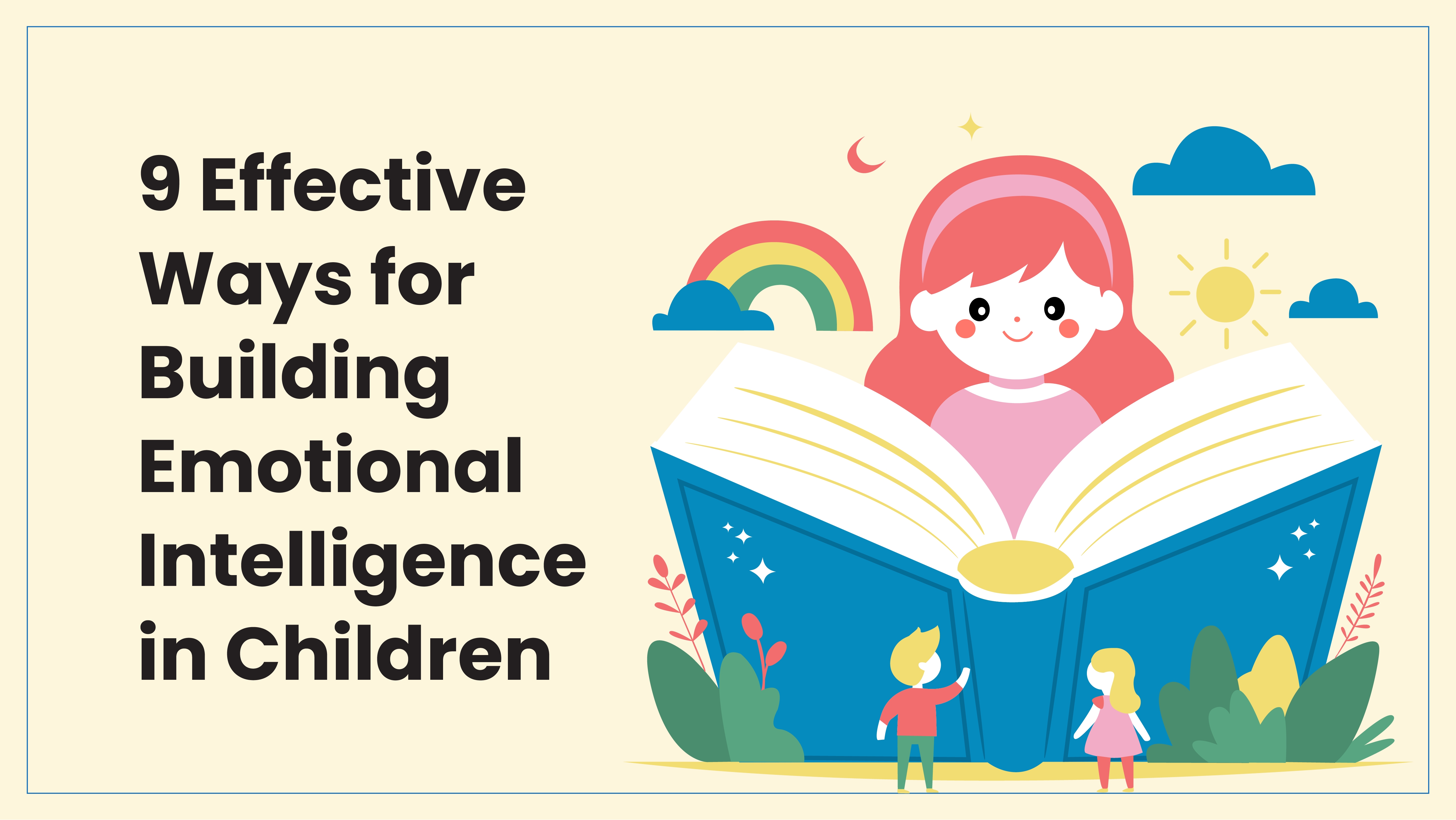Building emotional intelligence in children is a crucial aspect of their development, laying a foundation for their future well-being and success. Emotional intelligence encompasses the ability to recognise, understand, and manage one’s own emotions, as well as empathise with others. Teaching emotional intelligence in early childhood sets the stage for healthier relationships, better academic performance, and improved mental health. Here are nine effective ways to nurture emotional intelligence in children.
1. Model Emotional Intelligence: Children learn a great deal by observing the adults around them. By modeling emotional intelligence, parents and caregivers show children how to handle emotions effectively. Demonstrating empathy, managing stress calmly, and expressing emotions constructively teaches children valuable lessons. When adults practice self-awareness and self-regulation, children learn to mirror these behaviours.
2. Encourage Open Communication: Creating an environment where children feel safe to express their feelings is vital. Encourage open communication by asking children about their day, how they feel, and what they think about various situations. Listening attentively and validating their emotions fosters a sense of trust and security. This practice helps children articulate their feelings and understand that it’s okay to express them.
3. Teach Emotional Vocabulary: Helping children build a robust emotional vocabulary is a key part of teaching emotional intelligence in early childhood. When children can name their emotions, they can better understand and manage them. Use words like happy, sad, frustrated, and excited in daily conversations. Discuss different emotions and relate them to real-life situations to deepen their understanding.
4. Promote Empathy: Empathy is a cornerstone of emotional intelligence. Encourage children to consider others’ perspectives and feelings. Discuss scenarios and ask questions like, “How do you think that made them feel?” Role-playing activities can also be effective in teaching empathy. When children learn to empathise, they build stronger, more compassionate relationships.
5. Practice Problem-Solving Skills: Teaching children how to solve problems on their own enhances their emotional intelligence. When conflicts arise, guide them through the process of identifying the problem, brainstorming solutions, and evaluating the outcomes. This approach not only helps in resolving issues but also teaches children to handle challenges in a constructive manner.
6. Use Books and Stories: Books and stories are powerful tools for teaching emotional intelligence in early childhood. Choose stories that highlight various emotions and social situations. Discuss the characters’ feelings and decisions, and ask children what they would do in similar situations. This method helps children understand and process emotions in a relatable context.
7. Encourage Play and Social Interaction: Play is a natural way for children to explore and express their emotions. Through play, children learn to cooperate, share, and navigate social dynamics. Encourage children to express themselves through individual activities as well as activities that require teamwork. Social interactions during playtime are opportunities for children to practice empathy, negotiation, and emotional regulation.
8. Teach Mindfulness and Relaxation Techniques: Mindfulness and relaxation techniques can significantly aid in building emotional intelligence in children. Teach simple mindfulness exercises, such as deep breathing to help children calm themselves and stay present. These techniques equip children with tools to manage stress and emotional overload effectively.
9. Celebrate Emotional Growth: Recognising and celebrating emotional growth reinforces positive behaviour and motivates children to continue developing their emotional intelligence. Praise children when they handle a difficult situation well, show empathy, or manage their emotions effectively. Celebrating these achievements makes children feel valued and encourages them to keep growing emotionally.
To sum up, building emotional intelligence in children is a continuous process that requires patience, consistency, and dedication. By integrating these nine strategies into daily life, parents, caregivers, and educators can significantly contribute to teaching emotional intelligence in early childhood. The benefits of nurturing emotional intelligence are profound, leading to happier, healthier, and more resilient children who are well-prepared to navigate the complexities of life.
In summary, the power of teaching emotional intelligence in early childhood lies in its ability to foster well-rounded individuals. By modeling emotional intelligence, encouraging open communication, teaching emotional vocabulary, promoting empathy, practising problem-solving, using books and stories, encouraging play, teaching mindfulness, and celebrating emotional growth, we lay a solid foundation for children to thrive emotionally and socially. At Narayana, there is a firm belief in integrating these readiness methods right from the beginning to ensure the child starts off on the right foot, as at Narayana your dreams are our dreams.


Stay connected, stay informed, and thrive with Narayana Educational Institutions!

Good one.
This is very helpful for every child.
This is must to be inbuilt in our children for the better future.
This is very useful and we will follow it up
Really helpful article..thank you
Very useful and necessary information. Thnx for sharing
Very useful information ….
Yeah… good I have enjoyed reading ways to build effective emotional intelligence.. and I loved the steps and I Will really follow them and include in my daily life schedule..
Thank-you..